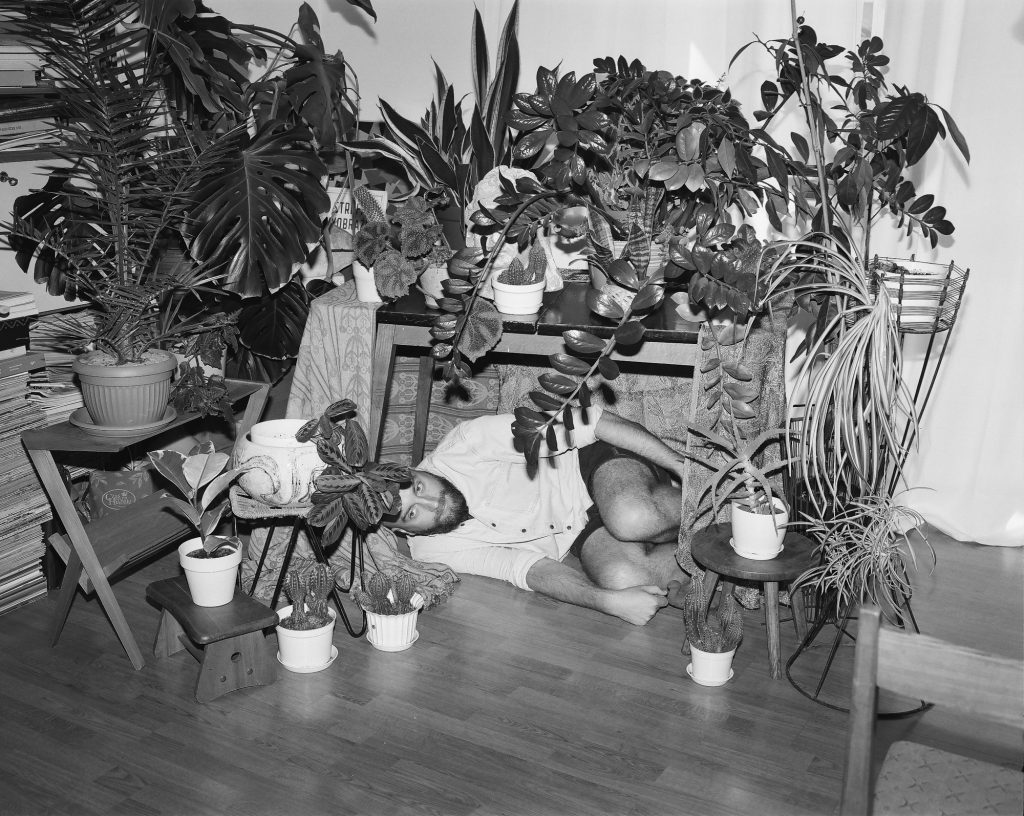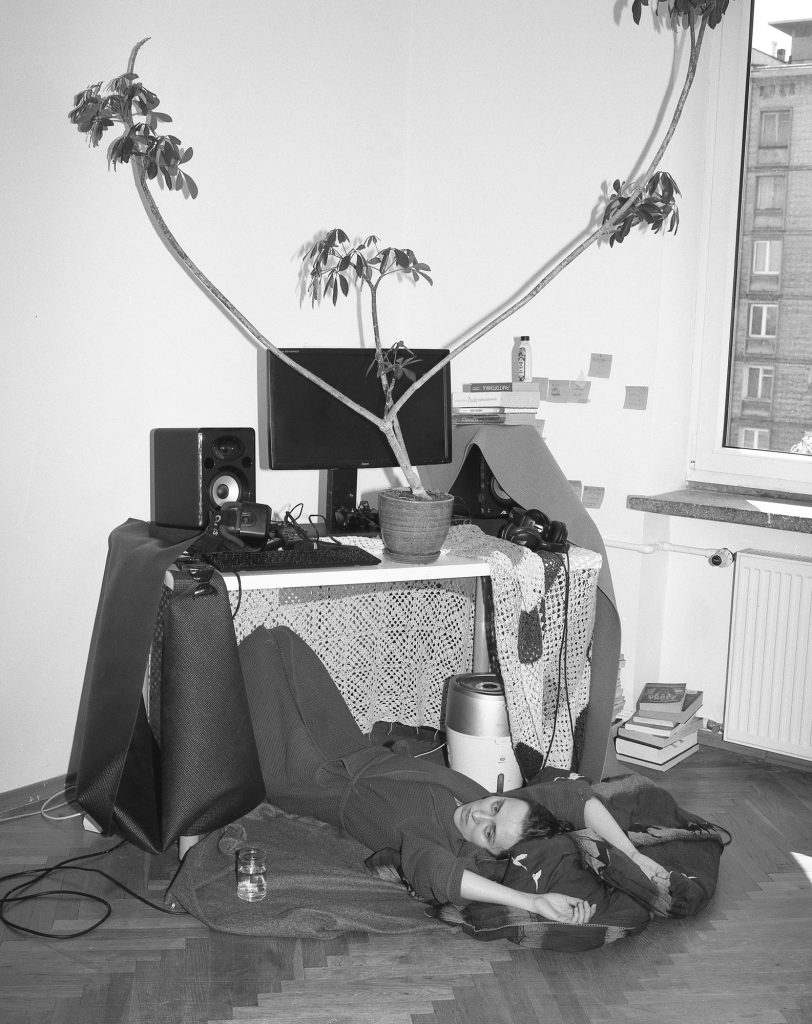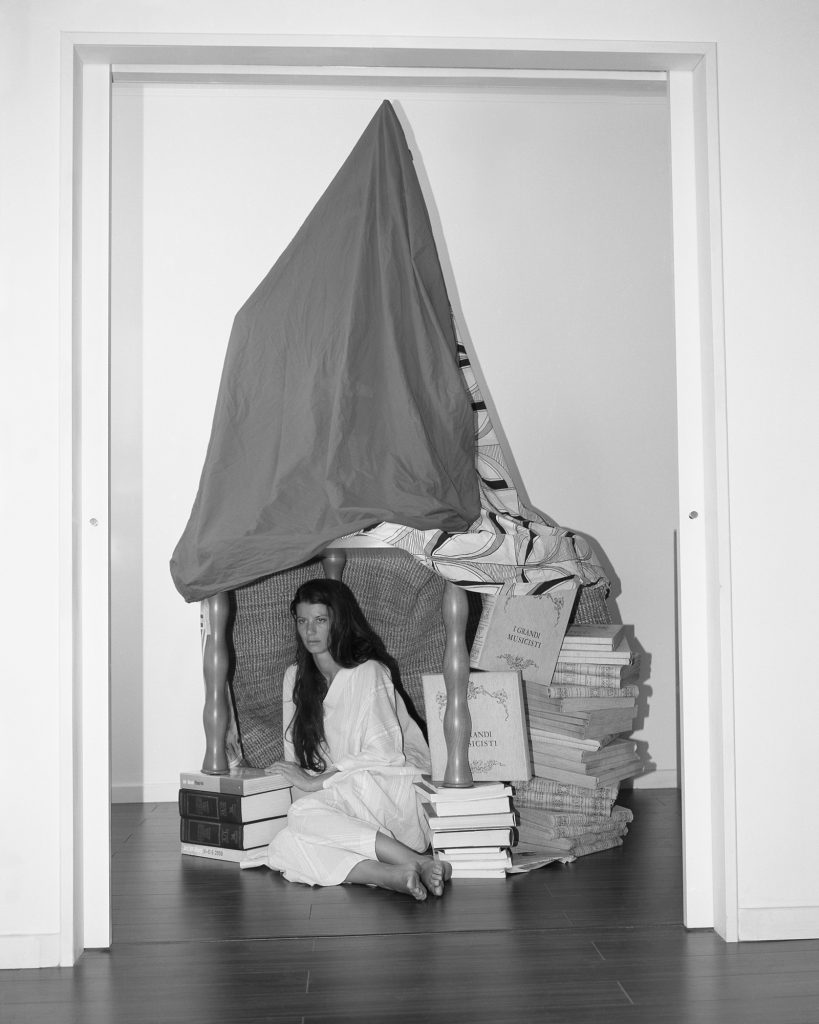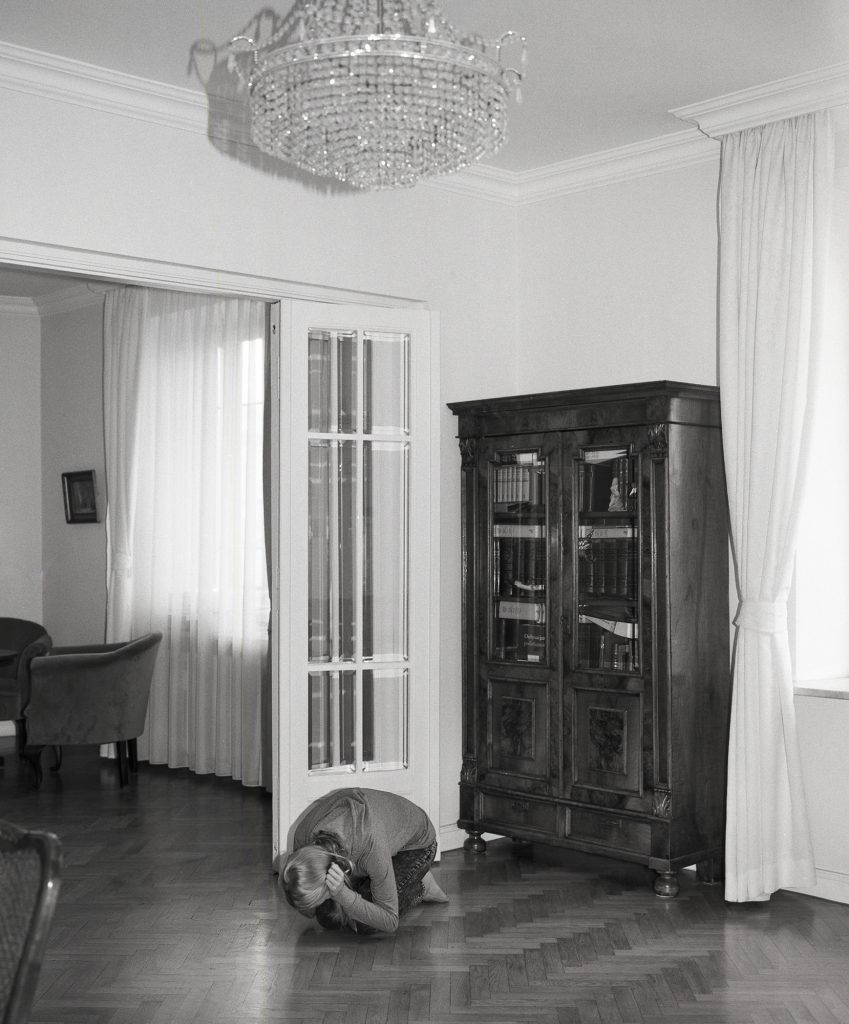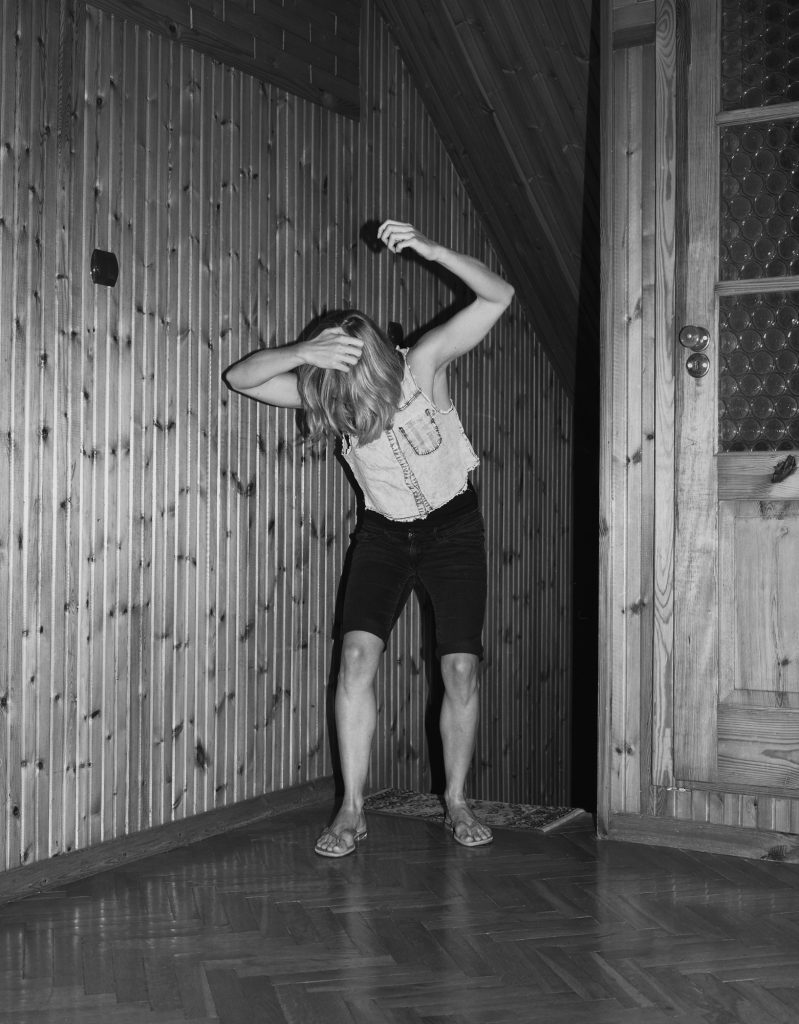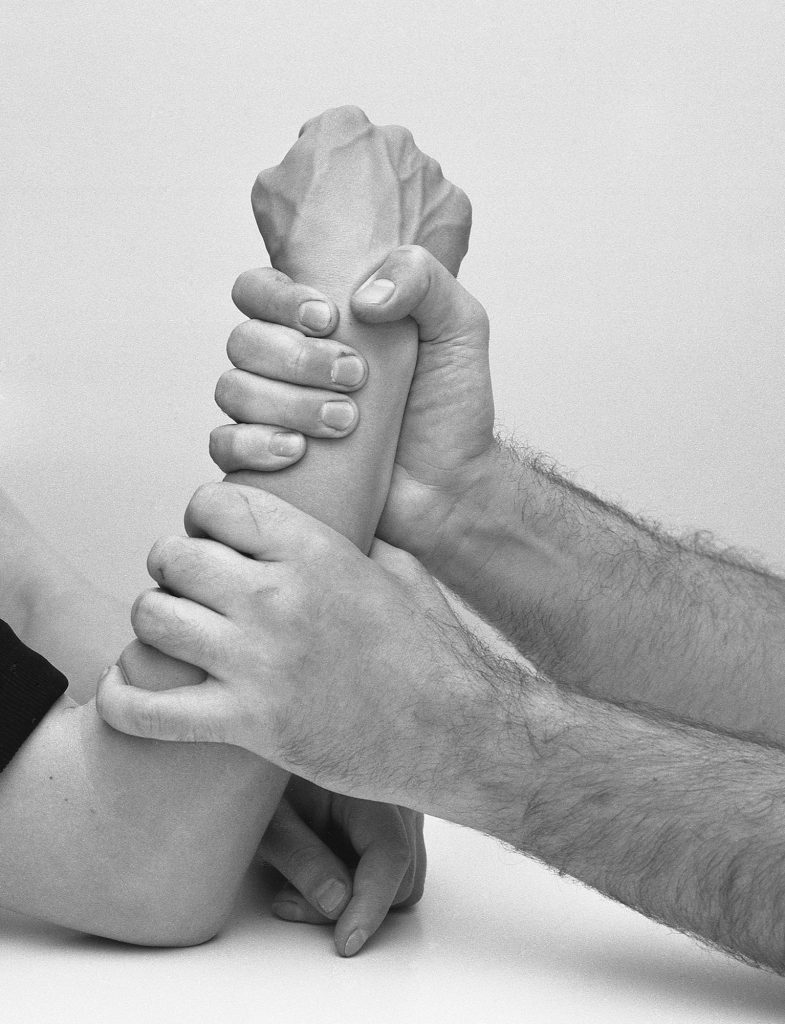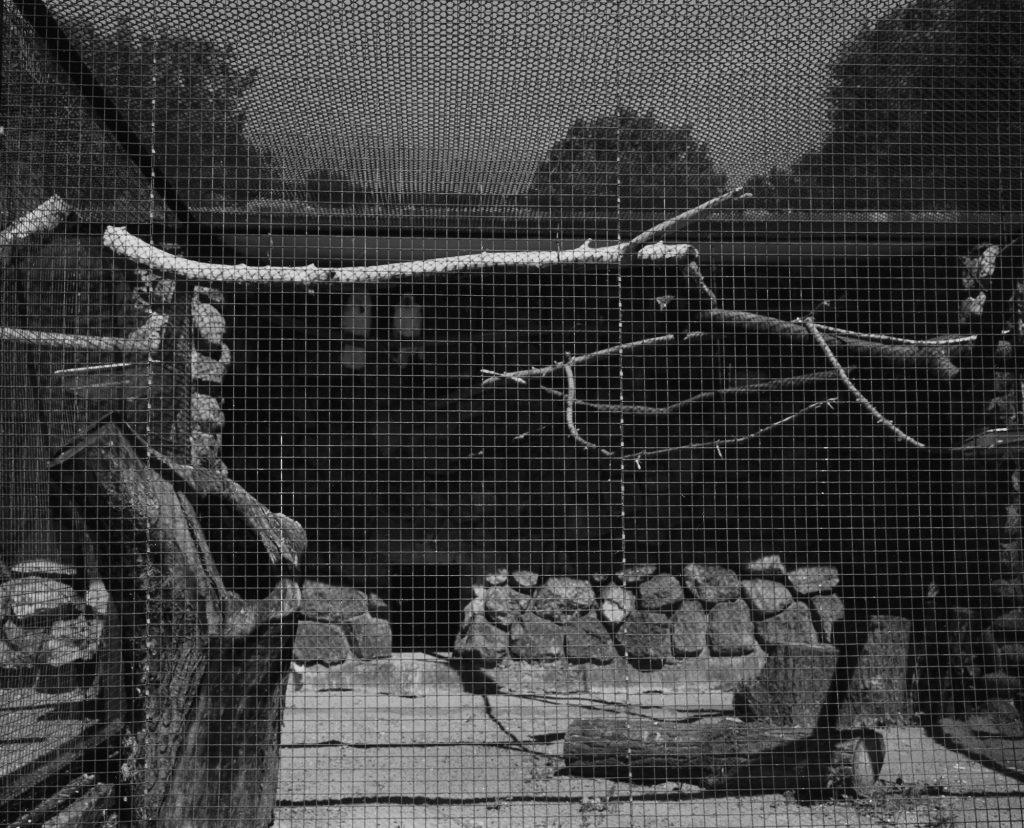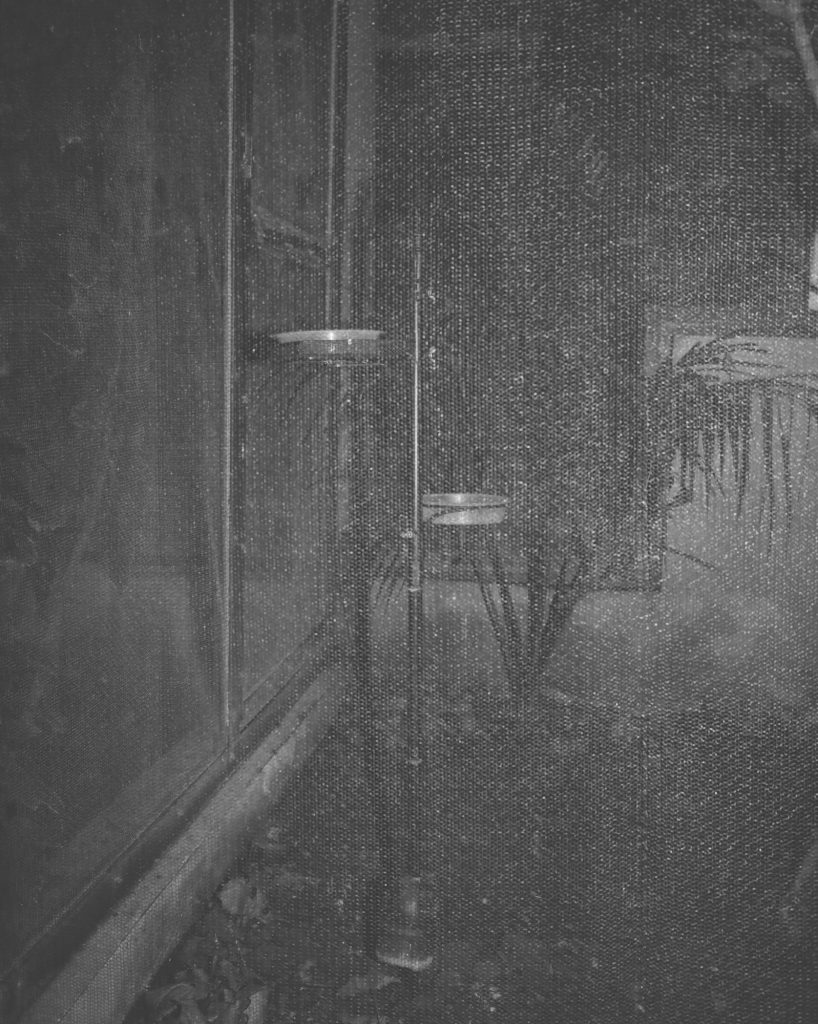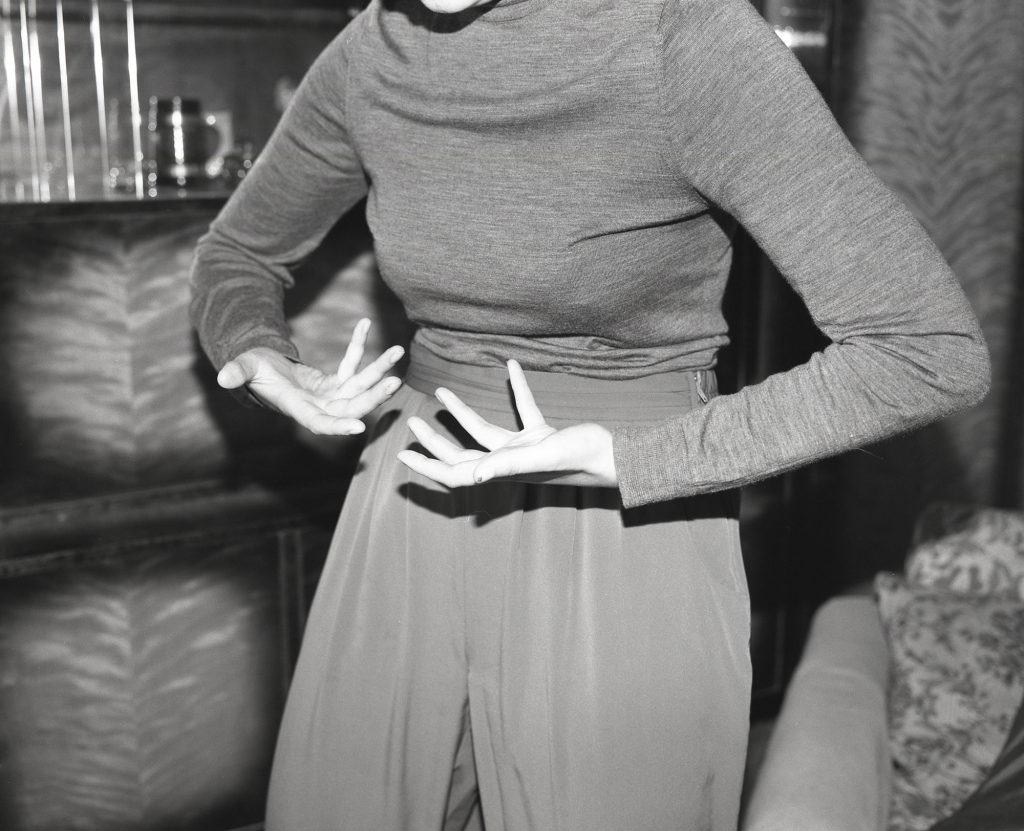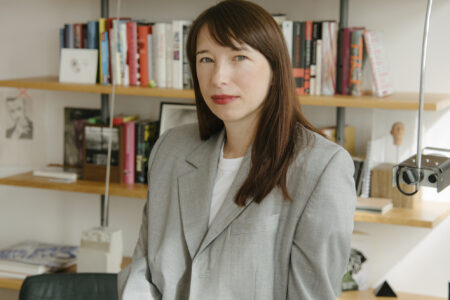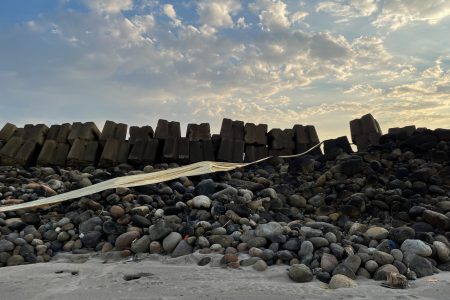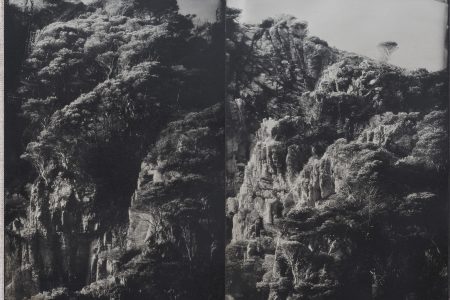Joanna Piotrowska: Choreographing Uncertainty
TLmag contributor Lara Chapman takes us through the monochromatic images of Polish photographer Joanna Piotrowska, whose uneasy visuals and refusal to create easily digestible images ask us to embrace the discomfort of uncertainty.
In the photograph Untitled (2019) by Joanna Piotrowska, there is a bearded man lying underneath a table in the foetal position. The table’s surface is covered in houseplants like a mini-tamed-jungle. There is fabric hanging over three sides of the table, creating a kind of den. The man seems expectant but it is unclear why. His head is lifted slightly off the floor and his eyes search out past the crop of the photo. Is he playing? Is he hiding? Is he in danger?
The sense of uncertainty one feels when looking at Untitled (2019) is no accident, indeed it is carefully staged. Piotrowska’s practice of photography and filmmaking through performance revolves around taking “images which are actually very hard to understand or pin down or explain” she says. This elusiveness slips into every part of her work from how she positions herself as a “choreographer” rather than a photographer, to her website which is defiantly difficult to navigate and offers very little information. In our hyper-connected world where the answer to almost any question is just a google away, her rejection of simple answers and desire to invoke uncertainty seem somewhat rebellious.
The series Photographs Inspired by Self-Defence Manuals (2017), treads a tightrope of interpretation. To create these images, Piotrowska choreographed young women in domestic spaces to act out a range of contorted “body positions”. One close-up photograph shows a tangle of forearms and hands tightly clutching each other – it could be a moment of passion or a moment of violence. Another photograph depicts a woman flailing her arms above her head. Has the woman been captured by the camera mid-dance move? Or is she mid-stumble, reeling backwards towards the staircase after someone from outside the frame of the camera pushed her?
The uneasy uncertainty of these images foregrounds issues around women’s agency. Are the subjects acting of their own accord or has someone prompted their behaviour? Piotrowska explains that the series “is not really about the specific bodies and domestic spaces, it is about women in society. It is about how we [women] often feel uncomfortable when we are forced into patriarchy.” The series deals with gender-based conditioning which operates almost invisibly in our society. It grew out of the artist’s personal experiences growing up in the conservativeness of Catholic Poland: “Once I realised how I’d been treated my whole life without really being aware of it, I felt a lot of anger,” says Piotrowska.
In a more recent series, Enclosures (2019), Piotrowska investigates themes of human conditioning from a different perspective. The photographs depict empty zoo enclosures, devoid of animals. There is an eerie, ghost-town feeling about them. The lack of obvious subject matter makes you wonder what it is that you are supposed to be looking at. Piotrowska explains that “when you see the enclosures like this, you can see how they are organised and think about the architecture. There is always an area where animals sleep, an area where animals eat and an area for play. It evokes in me, the comparison with how we create our own spaces which are also quite oppressive.” Piotrowska’s fascination with humans’ drive to exert control on others is reflected in her aesthetics which she describes as “quite claustrophobic” and reflects that “a lot of people might not relate to this aesthetic”.
Through her uneasy visuals and refusal to create easily digestible images, Piotrowska asks us to embrace the discomfort of uncertainty. In the space that ambiguity brings, she invites us to contemplate, to take time and to reckon with the complex, multifaceted and sometimes unpleasant realities of human existence.
